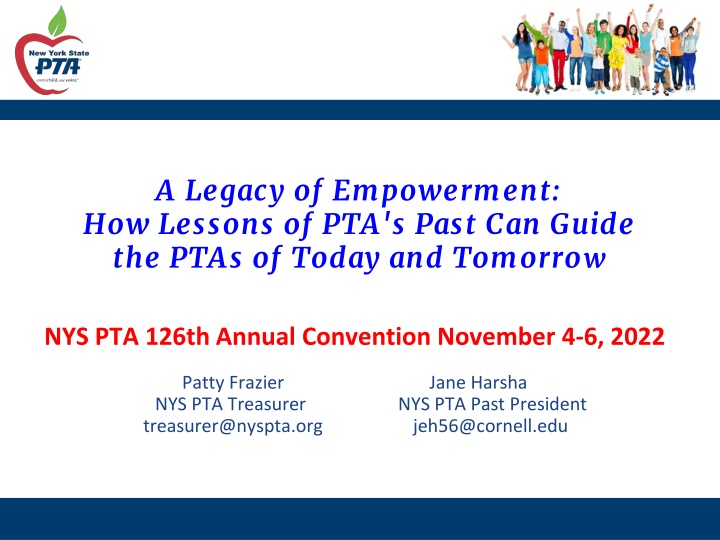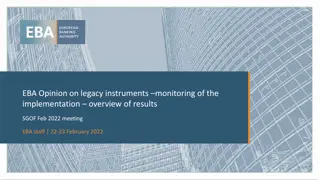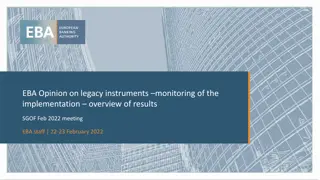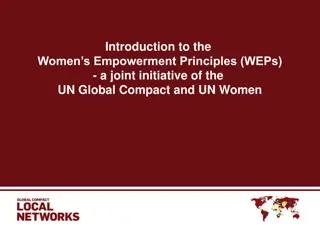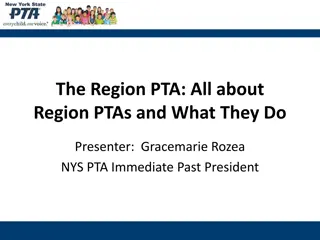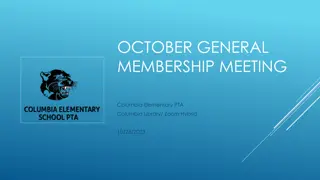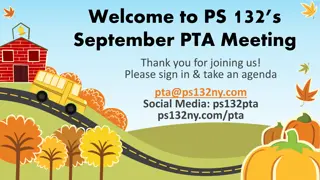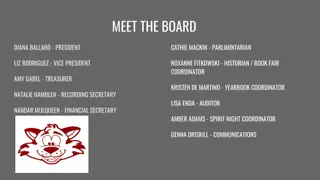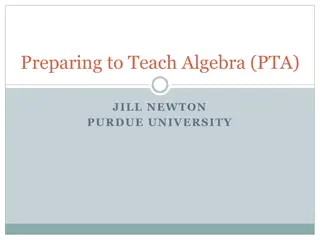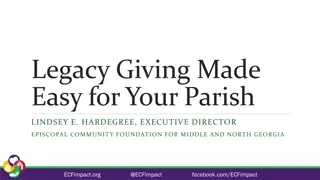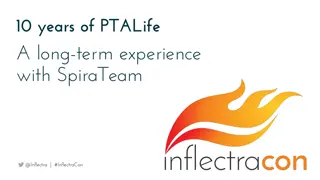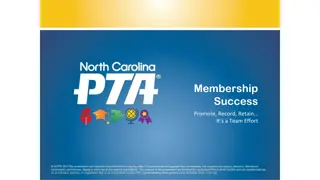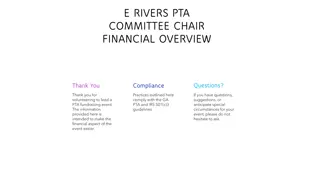PTA's Legacy of Empowerment: Lessons from the Past to Shape the Future
Explore the rich history and impactful mission of the NYS PTA, tracing back to its founding in 1897 by Alice McLellan Birney. From advocating for children's welfare to collaborating with educators and policymakers, PTA's legacy of empowerment continues to guide its efforts in empowering families and communities for a better tomorrow.
Download Presentation

Please find below an Image/Link to download the presentation.
The content on the website is provided AS IS for your information and personal use only. It may not be sold, licensed, or shared on other websites without obtaining consent from the author.If you encounter any issues during the download, it is possible that the publisher has removed the file from their server.
You are allowed to download the files provided on this website for personal or commercial use, subject to the condition that they are used lawfully. All files are the property of their respective owners.
The content on the website is provided AS IS for your information and personal use only. It may not be sold, licensed, or shared on other websites without obtaining consent from the author.
E N D
Presentation Transcript
A Legacy of Empowerment: How Lessons of PTA's Past Can Guide the PTAs of Today and Tomorrow NYS PTA 126th Annual Convention November 4-6, 2022 Patty Frazier NYS PTA Treasurer treasurer@nyspta.org jeh56@cornell.edu Jane Harsha NYS PTA Past President
NYS PTA MISSION PTA is a powerful voice for all children, a relevant resource for families and communities, and a strong advocate for the education and well-being of every child.
NYS PTA PURPOSES To promote the welfare of children and youth in home, school, places of worship, and throughout the community; To raise the standards of home life; To advocate for laws that further the education, physical and mental health, welfare, and safety of children and youth; To promote the collaboration and engagement of families and educators in the education of children and youth; To engage the public in united efforts to secure the physical, mental, emotional, spiritual, and social well-being of all children and youth; and To advocate for fiscal responsibility regarding public tax dollars in public education funding.
NYS PTA HISTORY PTA Founder Alice McLellan Birney attended the School for Parents at the Chautauqua Institute, NY in the summer of 1895. She participated in the Child Study course. There she developed the idea for drawing mothers together to work for better homes, schools and communities Upon returning to her home in Washington, D.C., she met with Phoebe Apperson Hearst who provided both intellectual and financial support. Mothers across the country were invited to the first meeting in Washington, D.C from February 17-19, 1897. Over 2000 attendees including those from NYS participated in the meetings and events. The New York State delegates began organizing there with Mrs. Fannie Barnes appointed as chairman. Later she served as the first NYS PTA President. The Syracuse Mothers Club invited all to come together there in September, 1897 for the first annual meeting. Fifty members attended from Syracuse, NYC, Oswego, Utica, Albany, Auburn, Waterville, Fayetteville and Fulton.
OUR SEAT AT THE TABLE From our beginning, PTA leaders understood that to accomplish their goals, they would need a seat at the table. This was very forward thinking for women in 1897 considering they did not yet have the power of the vote. As far back as 1903, members were urged to write to their legislators to support reform bills Our partnership with the NYS Department of Education began in 1925. We have worked with the State Department of Health since 1927. 1933 brought the formation of the Educational Conference Board of which we are still a member In 1938 the NYS PTA Legislation Chairman was asked to share what bills we would be supporting and in 1950, the governor sought our recommendations on several education bills February 4, 1974 was proclaimed PTA Day in the State of New York. This is now known as PTA Lobby Day The NYS PTA website lists our significant collaboration with 11 key coalitions, commissions and boards
PTA EMPOWERMENT We created our own Congress Founding: empowerment - less powerful on behalf of powerless (mothers/women for children) Ambitious and Inclusive of all, regardless of color, creed or condition 1897 Convention-->Committee of Reforms-initiative to improve lives of all children 1899- Petition to US Congress for juvenile justice/court reforms 1903- Letter campaign to endorse reform bill for juvenile courts and child labor 1912- NYS PTA Legislative Chair; advocacy process and methods Patterns: issue research/study, proposals for reforms, advocacy to law and policy makers.
PTA EMPOWERMENT Collaboration with other forces gov t leaders (T & FD Roosevelt, Hoover, Eisenhower, M Cuomo), higher education (Columbia, NYU, SUNY Oswego, Cornell Parent-Teacher Institute) organizations (MHANYS, ECB, NYSED, League of Women Voters, Rural Schools) -- Studies, regulations and laws, education/communication resources -- 1916 NYS PTA Congress of Mothers and Parent-Teacher Associations PTA Way: Parent Education->Parent/Family Engagement-> Policy/Resolutions-> Advocacy-> Leadership; Tapping pure power of volunteer Consistent concern for issues of child protection, healthy development, well- being; setting own agenda for advocacy
HEALTH Hygiene and physical culture committees were formed at the first annual meeting in 1897 In 1925, PTA partnered with the State Department of Health and State Education Department to help local PTAs advocate for school nurses, dental, vision and hearing care, hot school lunches and social hygiene (the precursor to sex education). In 1964, NYS PTA joined with National PTA in a massive effort to educate parents on the dangers of youth smoking. Work on this issue continued through the 90s
JUVENILE PROTECTION Laws and Regulations to Protect Children and Youth Juvenile Justice: 1899 Juv/Youth Court/Facilities- 2017 Raising the Age age-appropriate services, treatment, intervention, education Child labor: 1900-30 s: conditions; min. age; compulsory education Discipline: 1970s-80s corporal punishment; fair & equitable - restorative justice practices Media safety:1910 vaudeville, films, comics, radio, TV, ads, Internet Socioeconomic concerns: poverty, homelessness, foster care, domestic violence, student privacy, hazing, prejudice, fair housing, DEI
MENTAL HEALTH Survey of parents in 1899 in showed health concerns, PTAs responded by holding talks on the medical value of fresh air and deep breathing three times a day The partnership with the State Department of Health in 1925 also recommended efforts for mental health Mental hygiene was the emphasis of the state PTA in 1927-28. A three year State PTA project was conducted in 1969-1971 emphasizing children s emotional health resulting in the establishment by the governor of a Committee for Children NYS PTA ongoing partnership with the Mental Health Association in NYS (MHANYS) Increase in workshops and webinars on the topics of mental health and social emotional learning
RAPID RESPONSE Immediate needs of the time Legacy of resilience and flexibility to respond: o Mission and principles, positions/policy, whole child/every child lens => advocacy o System: research/study, resolutions (commitment to goals and actions), education/training and mobilization at local to national level AIDS (1980 s) school/community education and outreach; state award for local AIDS education programs; conference topic COVID-NYS PTA pivot to help members stay active and engaged; continue PTA business (elections, programs); connect with essential community resources; virtual training/chats (education, mental health, elections); Virtual Convention 2020. Info/Civic Literacy: DemocracyReady NY 2020 - Constitutional right to civic education. Combat mis/disinformation/polarization: competency to participate in democracy,
PTA CULTURE Volunteer Development invests in most valuable PTA resource - members present and future of the unit and NYS/National PTA Parent/member education is a PTA tradition; inclusive engagement tool Training in parenting and family engagement, advocacy issues, PTA basics/programs connects with current members and attract new ones helps achieve full potential as parents, PTA members, active citizens prepares to step up and train for leadership role creates skilled, well-informed, effective volunteers to carry out PTA work
WHAT CAN WE DO Be proactive: help members understand our mission, principles, ethics, current policy, and historic advocacy. Education leads to informed decisions; it s the first step towards taking action Build priorities into your structure: chairs, committees, task forces, goals, plans of work Be confident: act based on PTA mission and policy even if concern is not the focus of a specific resolution or current NYS PTA campaign/ Lobby Day issues Voter Voice is a customizable tool, not just preset Take visible action: Lights on for Education (1962-73+): leg/ed issues, local needs Press Pause Time Out school-wide sit down (2015) Collaborate: PTA network, PTA partners, community organizations with shared mission, reciprocity-> share the work, expand participation, broaden the impact
Only through new PTA adventures in leadership and responsibility can we fulfill our obligation to protect America s children, preserve their freedom and dignity, and enhance their educational opportunities. Margaret Jenkins National PTA President 1961-1964 NYS PTA President 1944-1947
RESOURCES New York State PTA Website https://nyspta.org/home/about/nys-pta-facts/ NYS PTA Resource Guide Current Leadership Webinars and Workshops NYS PTA facebook groups: Diversity, Inclusion and Outreach NYS PTA Leaders eLearning - Run Your PTA Region Director and Region Board Contacts-Region Directors
Thank you for attending A Legacy of Empowerment: How Lessons of PTA's Past Can Guide the PTAs of Today and Tomorrow NYS PTA 126th Annual Convention November 4-6, 2022 Patty Frazier NYS PTA Treasurer treasurer@nyspta.org pastpresident@nyspta.org Jane Harsha NYS PTA Past President jeh56@cornell.edu
